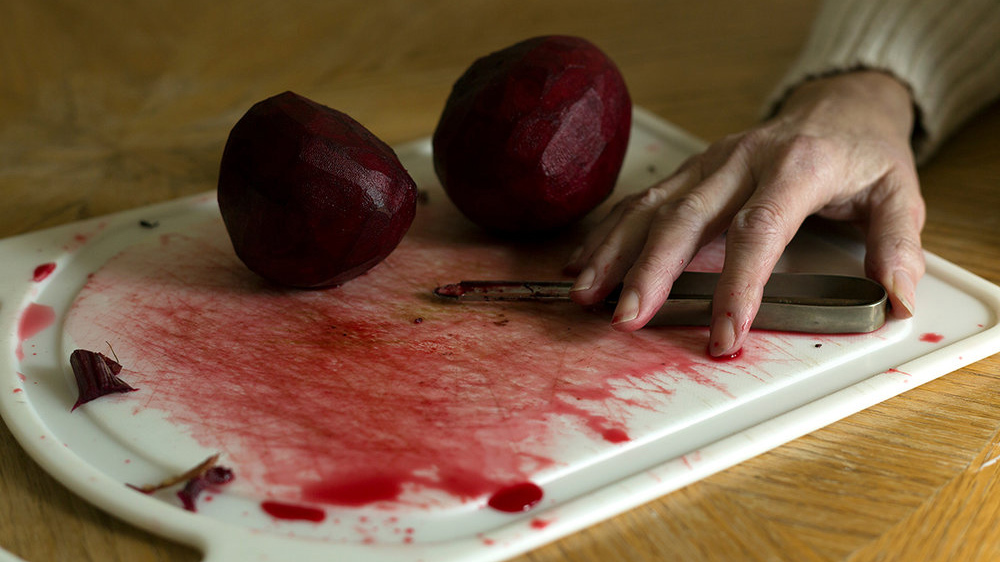There is little more prone to mythmaking than your own perception of where you grew up. Revisited, distance is skewed. Places and people appear smaller than they once were. You are also not what you once were. Very few things are.In the American Midwest, things have changed. Chelsea Darter grew up there and is now looking through her lens at little pieces of what is recognizable, and much that has turned into something less. Is it a broken landscape undergoing economic decay and political contraction, or a wounded king barely doing his once noble job? Somewhere between the two lies A Prairie Fisher King, opening this Saturday at Trapdoor Gallery. Weekly Alibi spoke with Chelsea Darter about her show, where she grew up and how making a myth helps her understand the complex changes that have taken place in the American Midwest. The following is an edited version of that conversation.Weekly Alibi: Tell me about the show. Chelsea Darter: The work is titled A Prairie Fisher King. It consists of photographs and text. The work as a whole exists in a book form, but the show itself will have the book and photographs on the wall. It’s an intimate look at my relationship with my family and where I grew up. I come from a small town in central Iowa that has been experiencing significant industrial decline and rural flight for the past decade or more. In many ways this project is an attempt to grapple with my not only often fraught relationship with where I am from, but my simultaneous connection or attachment with it. It is also taking a look at my own role in rural flight and the changing narrative of the place my family has lived since the early 1800s.What was it like growing up there?It is hard to describe. It was great because I was a big outdoors kid. I was able to run around and do whatever I wanted. When I was growing up there, I was very aware of the decline of the town, the economic and political changes happening. I feel like that kind of puts a cloud over things. Is your work trying to find that place that was or are you looking at what it has become?A little bit of both. I’m approaching the work in a more naive manner, which is why it is also framed as a myth. Maybe I can go back, I can fix it and defeat this unknown figure that is looming over the landscape. But as you’re going through the work, it forms a narrative. Once you get there you can maybe find little pieces of what existed before, but it has been turned into something else. It will continue to turn into something else. That can be a good thing or a bad thing. It is an unknown thing.You talked about rural flight. That is definitely real. You are obviously not there. What is your responsibility to this place? That is something I think about a lot. Obviously, my responsibility would be to go back. Right?Maybe.Right. Maybe. Right now it is a little out of my control. It is something I think about a lot. What is my responsibility to this place? What is my responsibility to my family members? Do I have a responsibility?Is that a question you find your friends who are still there asking? Or maybe those who are not there?We talk about that a lot, actually. I have this friend that lives in a bigger city in Iowa. She wants to leave, but she also thinks it is important that she stay. She thinks she is being responsible to the community.Do you see the writing component of this project as a description of the images, like a caption, or do you see it as integral to the project?The photographs themselves can sometimes come across as too disparate. I think the writing really grounds the project. It’s not necessarily a description of the images, it’s more so an immersive experience. The writing itself is semi-autobiographical prose. What is it about the myth?The project is named after the Fisher King of Arthurian legend. That motif is of a wounded ruler and an ailing kingdom. I’m coopting a Midwest version of this figure. I really enjoyed that metaphor. For me it serves two purposes. It supports the notion of home as something to be idealized, but also something that can be painful. It also really simplifies and mythologizes a complex situation that appeals to childhood sensibilities.
Chelsea Darter – A Prairie Fisher KingOpening Saturday, April 6, 7-10pmTrapdoor Gallery1120 Tijeras Ave NWFree and open to the public




